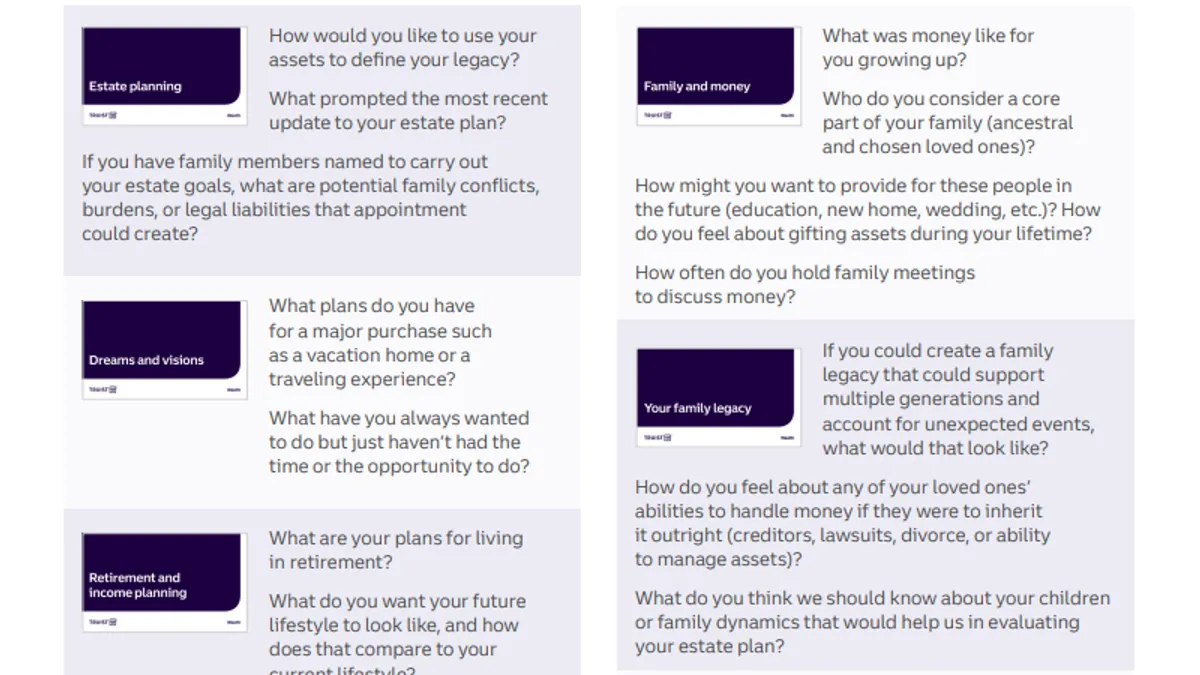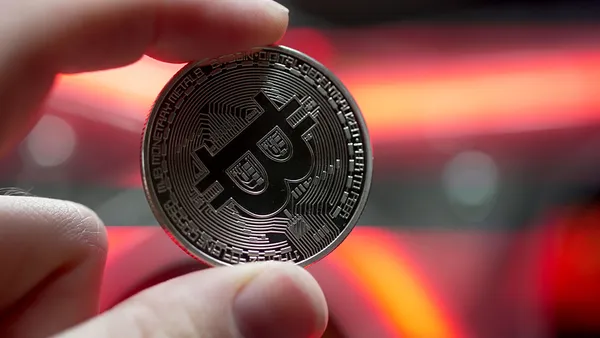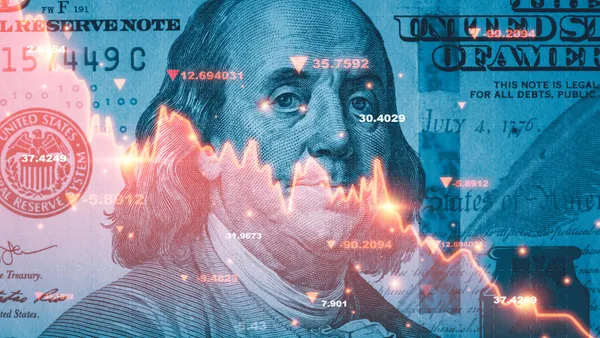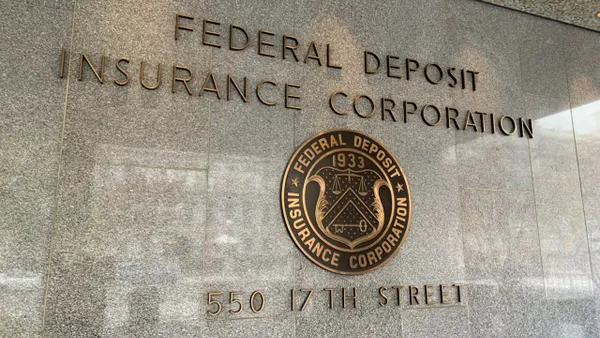Splitting a check, a phone bill or paying a babysitter has never been easier, as payments platforms such as Venmo, Zelle and Square's Cash App allow users to pay up through the convenience of their smartphones.
But consumers didn't always have these options available to them. Before the emergence of person-to-person (P2P) payment platforms, settling a bill among friends and family often meant writing a check or hunting down the nearest ATM if cash wasn't on hand.
When Venmo came on the scene in 2009, it revolutionized the P2P landscape, causing banks to reevaluate their existing payment systems.
"P2P applications have actually been around for over 10 years," Sarah Grotta, director of Mercator Advisory Group's debit and alternative products advisory service, told Banking Dive. "Banks have had them, through their core processors like Fiserv and FIS. But from a banking perspective, they really didn't catch on until Venmo, to be perfectly frank. Venmo created a really nice, simple application for consumers to move money for free, from one person to the other, which was new and exciting for the industry."
Venmo, which began as a New York City-based startup, was acquired by Braintree for $26.2 million 2012. But it entered the PayPal fold the following year, when the payments company bought Braintree for $800 million.
Bumpy road to profitability
Venmo processed more than $27 billion during the quarter ending Sept. 30, according to PayPal's third-quarter earnings report. That marked a 64% jump in payment volume from last year.
But, as many disruptors have learned, shaking up an established industry doesn't necessarily translate into profits. At least not yet.
The platform reportedly has yet to turn a profit. Transferring funds on the platform is largely free, minus a 1% fee for instant transfers. However, PayPal CEO Dan Schulman said during an earnings call that Venmo is making progress in its monetization efforts.
The platform plans to roll out a Venmo credit card next year through a partnership with Synchrony Financial, which will allow users to pay bills directly through the Venmo app.
Venmo's popularity over the past decade among millennials and Generation Z lit a fire under the country's major banks.
The growth of P2P payments platforms sparked financial institutions to "circle the wagons" around building their own network, Grotta said.
"They saw these transactions happening between consumers, and they were saying, 'We're banks, what we do is move money. We'd really prefer that our customers did that with something that we offer,'" Grotta said.
Banks circle the wagons
Enter Zelle, a consortium-based platform operated by Early Warning and owned by seven U.S. banks, including JPMorgan Chase, Bank of America and Wells Fargo. Early Warning launched the Zelle app two years ago.
"Many of the banks got behind the Zelle brand because it was something that PayPal and Venmo offered that the banks didn't, which was a single identifiable brand," Grotta said.
Jamie Armistead, business line leader at Early Warning, said Zelle allows banks of all sizes to offer a uniform platform that lets consumers transfer funds from one bank account to another.
"So when a small credit union is running Zelle, that's the same Zelle as Bank of America," he told Banking Dive. "It's leveled the playing field a little bit."
Early Warning reported $49 billion was sent through the Zelle network on 196 million transactions during the quarter ending Sept. 30.
"We’re now at a run rate of doing over a billion transactions and over a quarter-trillion dollars worth of dollar volume, and that's growing at 70% and 50%, respectively, year-over-year," Early Warning CEO Albert Ko said at a conference in October.
"With Cash and Venmo, and the like, we're all experiencing growth. People are realizing and recognizing that there are all these digital ways to pay," Armistead said.
Social media giant Facebook is the latest player to enter the P2P payments space. The company unveiled Facebook Pay in November, a new service that promises to unify the company's payments capabilities through its suite of platforms. The service launched on Facebook and Messenger, and the company says it also plans to make it available on Instagram and WhatsApp.
"The total number of payments that people make has not necessarily changed. They're just choosing different ways to make those payments," Armistead said.















